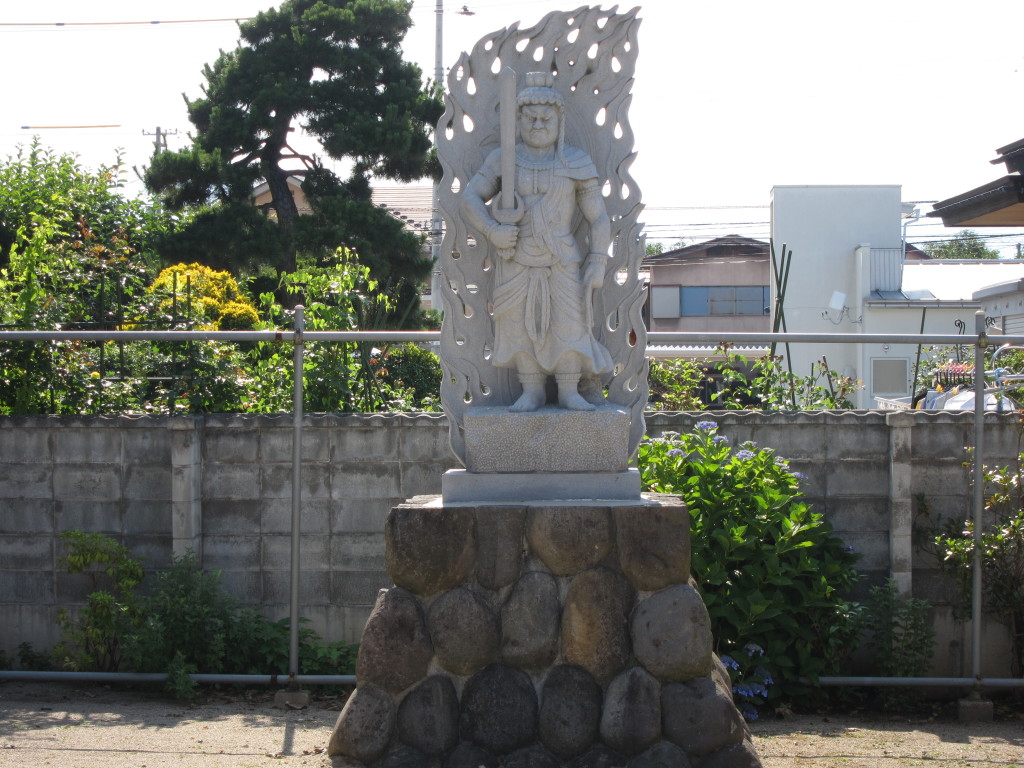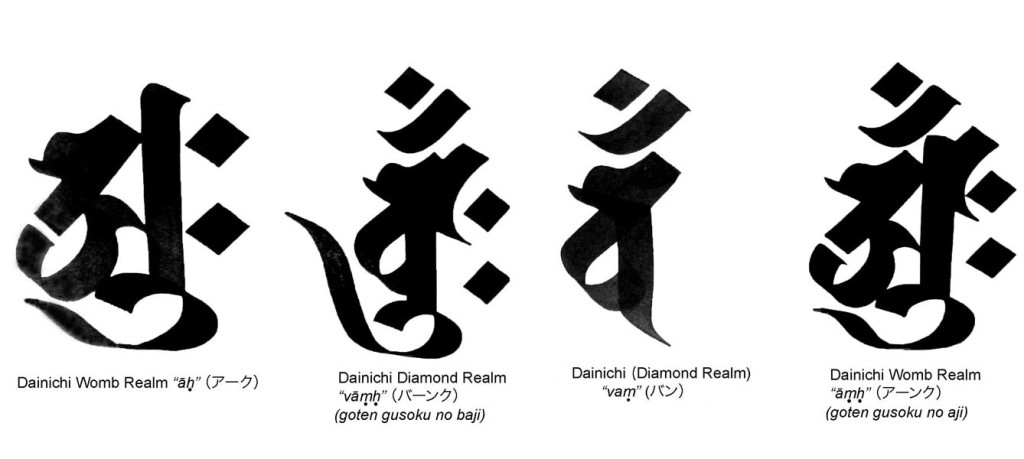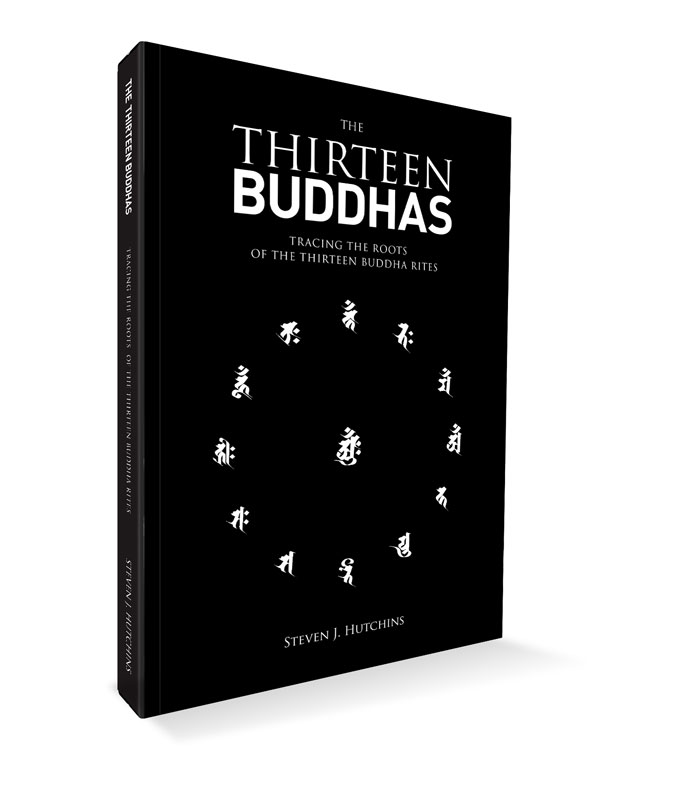The Thirteen Buddha Rites are a series of funeral rites and premortem offerings made to thirteen Buddhist deities on specific dates that have become strongly affiliated with the Shingon sect of Esoteric Buddhism. In this groundbreaking study, Steven J. Hutchins draws on years of research to trace their historical development and interpret their hidden meanings and symbolism.
Buy now on Amazon for just £9.99
The Thirteen Buddha Rites (jūsan butsuji 十三仏事) are a series of funeral rites and premortem offerings made to thirteen Buddhist deities on specific dates that have become strongly affiliated with the Shingon sect of Esoteric Buddhism in Japan.
The term “Thirteen Buddhas” is somewhat deceptive as the group is made up of five Buddhas (nyorai 如来), seven Bodhisattvas (bosatsu 菩薩) and one Wisdom King (Myō-ō 明王). Only the historical Buddha Shaka Nyorai (Sakyamuni) is accepted as a person; the others are essentially metaphysical concepts, similar to the archetypes or forms of Platonism. In terms of hierarchal status, the Buddhas are the most exalted deities and they are the main figures paid worship to by the various Buddhist sects in Japan. For example, the cosmological Buddha Dainichi Nyorai (Mahavairocana) is the main deity of the Shingon sect, the Pure Land sects venerate Amida Nyorai and generally the Zen sects pay homage to Shaka Nyorai. Bodhisattvas are associated with the Mahayana Buddhist teachings and they are best described as enlightened beings who, seeing the profound contradiction in attaining Nirvana only for themselves, consent to be reborn again until all suffering beings attain Buddhahood. The Wisdom Kings (also translated as “Kings of Light”, “Mantra Kings” etc.) were originally Hindu deities who were later adopted into the Japanese esoteric sects. From the thirteenth century, they were transformed from esoteric deities to popular protector gods, guarding against evil forces. Fudō Myō-ō is by far the most prevalent Wisdom King in Japan followed by his counterpart the “Wisdom King of Lust” Aizen Myō-ō 愛染明王.
 Statue of Fudō taken from Sōfukuin (宗福院) in Yamagata prefecture
Statue of Fudō taken from Sōfukuin (宗福院) in Yamagata prefecture
Rituals centred around thirteen Buddhist deities are unique to Japan and are closely connected with memorial services for the deceased. Bishop Taisen Miyata of the Shingon sect describes a typical memorial service as follows:
“…[T]he thirteen deities are regarded as the guardians of specific days after the death of a loved one. On certain days after the death, the family and friends of the deceased gather in front of a scroll depicting the thirteen deities, and there a memorial service is held. […] On the memorial day, the family and friends of the deceased gather around a scroll or pictorial representation of all of the above thirteen deities, and there each mantra is recited. This pious custom is even today still practiced in many parts of Japan.”
In the Shingon sect, each of the thirteen deities has their own individual mantra made up of three parts: an introductory syllable such as om (Jp on); a short description of the deity; and a closing syllable which is usually the Sanskrit seed syllable (shuji 種子) unique to each deity. The recital of this seed syllable is believed to call forth the Buddhist deity to arise in either the practitioner’s mental or physical vision. In this sense, the mantras are recited with the belief in the mystical power of sound to unite the practitioner with the invoked deity. Although the use of these specific mantras is mostly restricted to the esoteric Buddhist sects, the Thirteen Buddha series of mortuary rites became standard at most Buddhist temples by the middle of the Edo period. At the heart of these rites lies the belief that the Buddhas can be petitioned to provide help and assistance to the deceased’s spirit as it journeys into the afterlife.
 Dainichi is notable for having four different Sanscrit seed syllables (shuji 種子) shown above.
Dainichi is notable for having four different Sanscrit seed syllables (shuji 種子) shown above.
In Buddhism, each sentient being has a number of lives and deaths that follow on from each other in an almost unending cycle (the attainment of nirvana being considered a rare event). As one life leads to another, the gap between death and rebirth became an issue of considerable concern. By holding feasts or making various offerings to the Buddhist deities according to specific memorial days, it is believed that one can gain merit that will be transferred to aid the departed before reincarnation (a concept known in Japan as tsuizen kuyō 追善供養). The Thirteen Buddha Rites, however, from their inception, extended beyond Buddhist funerary memorial services to include premortem offerings known as gyakushu 逆修. These are actions carried out to increase one’s own store of merit in preparation for one’s own death.

